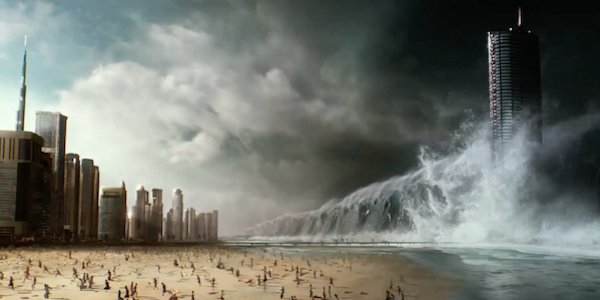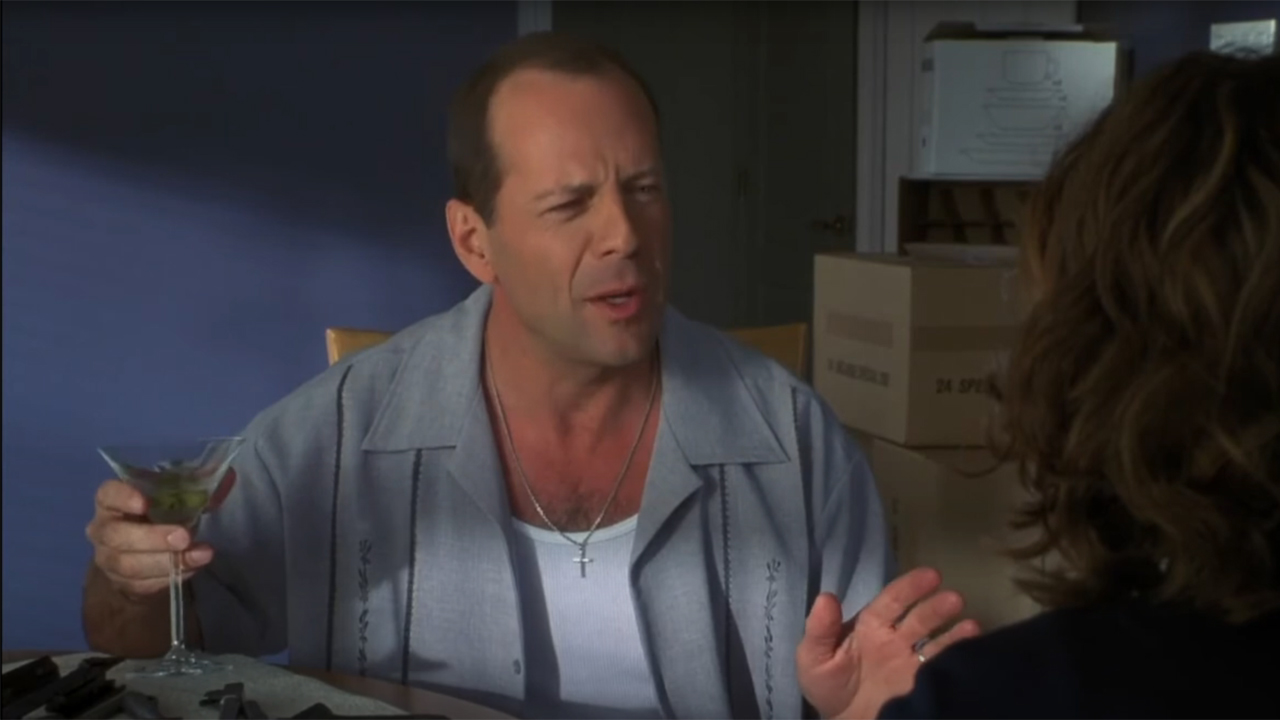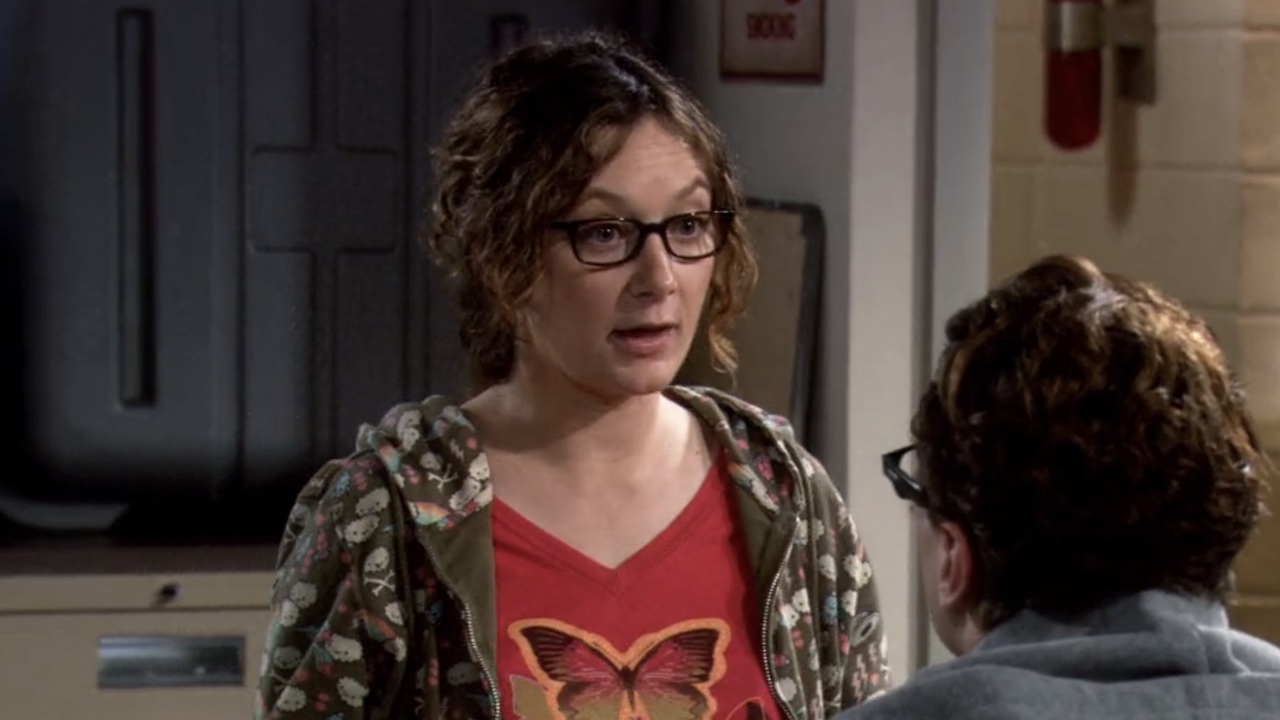To 3D Or Not To 3D: Buy The Right Geostorm Ticket

Geostorm has been a movie a long time coming, but has it been worth the wait? We try to answer that question, at least as far as the 3D is concerned. Geostorm is directed by Dean Devlin, a long time collaborator of Roland Emmerich, who has made some of the most notable disaster movies of recent years. Of course, any modern disaster movie would be best served by taking advantage of the ability to show its disasters in 3D.
If you're looking for a review of Geostorm as a film, we have that, but here we're simply taking a look at the film's 3D technology and trying to help you decide if it's worth dropping the extra coin on those special glasses. Let's break it down and see what we have.
As previously noted, Geostorm is, ultimately, a disaster movie, which means that the star of the film isn't so much Gerard Butler as it is the special effects that create the various disasters. Since the premise of Geostorm allows for multiple disaster types, it has plenty of potential to use the technology in interesting ways. A film like this is clearly made for 3D technology, as it can help bring the various weather events right up to your face. Add to that the science fiction and space travel elements present, and it's clear Geostorm is a good fit for a 3D presentation.
While 3D post-production can be an afterthought in many cases, it doesn't appear that was the case in Geostorm. Some of this may have been accidental, but the fact is that Geostorm spent literally years in post-production, which means there was plenty of time for the movie to spend getting everything right. From a technical standpoint, it's clear that every effort was made to make Geostorm work. The extra time obviously led the 3D team to make sure all the details were in order for an overall solid 3D experience.
Many seem to view the act of throwing objects off the screen toward the audience to still be a 3D gimmick, and as such, many movies seem to forego this entirely. However, Geostorm seems like a movie ready made to use gimmicks and have a lot of fun with them, which makes it all the more frustrating that it doesn't take advantage of this. While there are a few moments where the movie does throw things at you, they are few and far between. Those moments are also really well done, which makes one wonder why there aren't more of them.
What Geostorm lacks in before the window theatrics, it makes up for in beyond the window scenery. The shots of tidal waves and storms ravaging cities go on as far as the eye can see, and they look great. It isn't just the disaster moments that work either. Even a simple shot of people standing at the end of a hallway looks great as the hall has a real feeling of depth. The storms' epicness is greatly aided by the sheer size of them, which is due to the way they take up space in both depth as well as width.
3D glasses by their very nature add a filter between you and the screen, which is going to naturally dim the image of the screen. If this isn't compensated for, the entire movie can look foggy. While this can vary greatly depending on the lamp of the projector you're watching, I had no issues with the brightness of Geostorm. Even with scenes set in space, at night or caused by a sun blocking storm, the characters or objects you're meant to be looking at never appear to be dim. Everybody and everything is clear and easy to see.
CINEMABLEND NEWSLETTER
Your Daily Blend of Entertainment News
If you've ever removed your 3D glasses during a movie, you'll notice that the image appears blurry, but the degree to which it is blurry depends greatly on how much the image is being manipulated to create the 3D effect. If you do this during Geostorm you'll notice the image is being manipulated a lot. Even in simple moments of character dialogue, which can often be given a much more 2D treatment, you'll notice a lot more going on here. There are multiple layers of 3D happening at almost all times during Geostorm.
While your mileage may vary depending on how susceptible you are to motion sickness, most people probably won't have many issues with Geostorm. There's really only one sequence in the movie, a spacewalk, where the camera ever needs to get particularly out of control. Even that probably won't bother many people as it doesn't get too crazy. Tidal waves aren't designed to make you sea sick. Wind storms shouldn't make you air sick either. From there, the brightness of the film won't force your eyes to work too hard and mess with the rest of your body.
Whether or not you should see Geostorm at all is a valid question that you might want to seriously consider. If, however, you decide that you are going to see it, you could do worse than seeing it in 3D. While it isn't quite the 3D blowout spectacular that it maybe should have been, it's clear that the movie wanted to be a strong 3D experience, and for the most part, it succeeds. It doesn't really do anything badly, it just chooses to not do enough. But if you're a fan of the format, you'll find plenty to enjoy here.

CinemaBlend’s resident theme park junkie and amateur Disney historian, Dirk began writing for CinemaBlend as a freelancer in 2015 before joining the site full-time in 2018. He has previously held positions as a Staff Writer and Games Editor, but has more recently transformed his true passion into his job as the head of the site's Theme Park section. He has previously done freelance work for various gaming and technology sites. Prior to starting his second career as a writer he worked for 12 years in sales for various companies within the consumer electronics industry. He has a degree in political science from the University of California, Davis. Is an armchair Imagineer, Epcot Stan, Future Club 33 Member.









